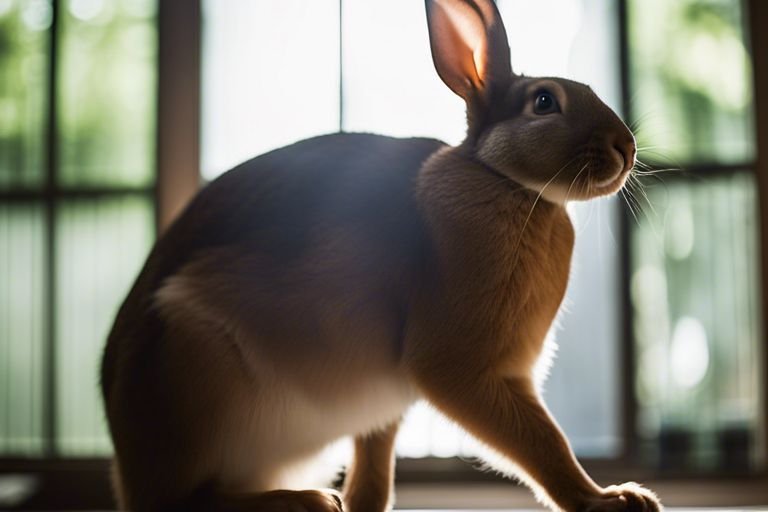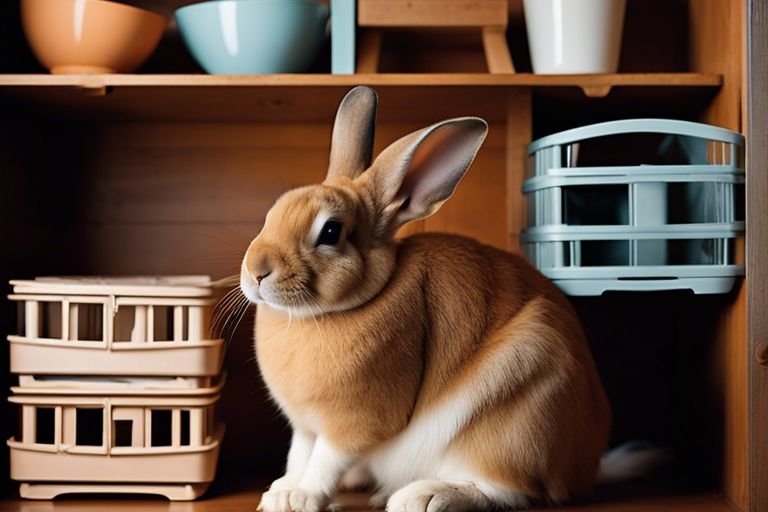Have you ever wondered whether your Flemish Giant rabbit is prone to back muscle strains? It is essential to understand the potential risks and health issues that your pet rabbit may face, especially when it comes to their musculoskeletal system. Back muscle strains can be a serious concern for Flemish Giant rabbits due to their large size and weight, which puts a significant amount of stress on their spine and muscles. In this blog post, we will explore the factors that can contribute to back muscle strains in Flemish Giant rabbits, as well as provide tips on preventing and managing this potentially painful condition.
Key Takeaways:
- Flemish Giant rabbits are prone to back muscle strains due to their large size and heavy bodies.
- Proper housing and exercise can help reduce the risk of back muscle strains in Flemish Giant rabbits.
- Regular veterinary check-ups are essential for monitoring the overall health and well-being of these rabbits.
- Preventing obesity in Flemish Giant rabbits can also lower the risk of back muscle strains.
- Early recognition and treatment of any signs of back muscle strain are crucial for the rabbits’ long-term health and comfort.
Anatomy of Flemish Giant Rabbits
Obviously, in order to understand the potential for back muscle strains in Flemish Giant rabbits, it’s important to have a basic understanding of their anatomy. These rabbits are known for their large size and distinctive appearance, which is a result of their unique musculoskeletal structure and body composition.
Musculoskeletal Structure
When it comes to their musculoskeletal structure, Flemish Giant rabbits are built to support their significant size and weight. Their powerful hind legs are designed for propulsion, allowing them to move with agility and strength. However, this also places a considerable amount of stress on their back muscles, particularly when jumping or standing upright. The muscles in their back must work hard to support their body and minimize the risk of strains or injuries.
Unique Aspects of Their Size and Weight
One of the most notable features of Flemish Giant rabbits is their size and weight. As one of the largest rabbit breeds, their bodies can put a significant amount of strain on their musculoskeletal system. The sheer mass of their bodies means that their back muscles and spine must work tirelessly to support them, making them more prone to strains and injuries if not properly cared for and supported.
Factors Contributing to Muscle Strains
Any rabbit can potentially experience muscle strains, but there are certain factors that may contribute to an increased risk of this issue. Understanding these factors can help you take proactive steps to prevent back muscle strains in your Flemish giant rabbit.
Genetic Predispositions
When it comes to muscle strains, some rabbit breeds may be genetically predisposed to this issue. This could be the case with Flemish giant rabbits due to their large size. Their bodies may be more prone to muscle and back issues due to their genetics. It’s important to be aware of this potential predisposition and take extra care to prevent muscle strains in your rabbit.
Environmental and Care Factors
The environment and the care you provide for your Flemish giant rabbit can also play a role in their risk of muscle strains. Factors such as cage size, bedding, and exercise can all impact your rabbit’s muscle health. Ensuring that your rabbit has a spacious, comfortable living environment and receives the appropriate exercise and nutrition can help reduce the risk of muscle strains. This includes regular veterinary check-ups to identify any potential breed-related health conditions that could impact muscle and back health.
Prevention and Management of Back Strains
To ensure the health and well-being of your Flemish Giant rabbit, it’s important to take proactive measures to prevent and manage back muscle strains. By implementing proper handling techniques, diet and exercise considerations, you can minimize the risk of back strains in your furry friend.
Proper Handling Techniques
When handling your Flemish Giant rabbit, it’s crucial to support their entire body, including their hindquarters, to avoid putting undue stress on their back muscles. Make sure to use both hands to carefully lift and support your rabbit, keeping them close to your body to provide a secure and stable hold. Avoid sudden movements or twisting their body during handling, as this can lead to muscle strain or injury.
Diet and Exercise Considerations
Proper nutrition and exercise are essential in maintaining strong and healthy back muscles in Flemish Giant rabbits. Ensure that your rabbit is receiving a well-balanced diet that includes ample amounts of hay, fresh vegetables, and a limited portion of pellets. Additionally, providing regular opportunities for exercise, such as supervised playtime in a safe and spacious environment, can help strengthen their back muscles and overall musculoskeletal health.
Case Studies and Veterinary Insights
Your Flemish Giant rabbit may be susceptible to back muscle strains, and these case studies and veterinary insights can offer valuable information to help you understand and address this issue. Here are some detailed case studies and data to consider:
- Case Study 1: A 4-year-old Flemish Giant rabbit, weighing 15 pounds, experienced a back muscle strain while jumping off a high surface. Veterinary examination revealed muscle tension and pain, requiring 6 weeks of rest and physical therapy.
- Case Study 2: A 2-year-old Flemish Giant rabbit, weighing 12 pounds, developed a back muscle strain after being startled and making a sudden, awkward movement. Veterinary treatment included anti-inflammatory medication and restricted movement for 4 weeks.
- Case Study 3: A 3-year-old Flemish Giant rabbit, weighing 14 pounds, presented with chronic back muscle strain due to obesity. A combination of diet control, exercise, and physical therapy was prescribed by the veterinarian.
Real-life Experiences
In real-life situations, owners of Flemish Giant rabbits have observed the challenges of back muscle strains in their pets. Many have reported that their rabbits experienced sudden pain and difficulty in movement, often requiring immediate veterinary attention. These experiences serve as a reminder of the importance of monitoring your rabbit’s behavior and seeking prompt medical care when needed.
Expert Opinions on Treatment and Recovery
Veterinary experts emphasize the significance of providing appropriate treatment and dedicated care to aid in the recovery of Flemish Giant rabbits with back muscle strains. It is essential to follow the prescribed medication, rest, and physical therapy regimen to ensure the best possible outcome. With proper care and attention, many rabbits can recover fully and regain normal mobility.

The Prone of Flemish Giant Rabbits to Back Muscle Strains
The Flemish Giant rabbits are prone to back muscle strains due to their large size and weight. It’s important to provide them with a spacious and supportive environment to prevent injury. You should also ensure that they have proper nutrition and maintain a healthy weight to reduce the risk of back muscle strains. Additionally, regular exercise and keeping an eye on their posture and movement can help monitor their back health. By taking these precautions, you can help your Flemish Giant rabbit avoid back muscle strains and keep them healthy and happy for years to come.
FAQ
Q: Are Flemish Giant Rabbits Prone To Back Muscle Strains?
A: Yes, Flemish Giant rabbits are prone to back muscle strains due to their large size and heavy body. Their musculature may struggle to support such a large frame, making them susceptible to strains and injuries. Proper handling and supportive housing can help minimize the risk of back muscle strains in these rabbits.
Q: What are the symptoms of back muscle strains in Flemish Giant rabbits?
A: Symptoms of back muscle strains in Flemish Giant rabbits may include decreased mobility, reluctance to move, hunching of the back, sensitivity or pain in the back area, and changes in behavior such as irritability or aggression. If you notice any of these symptoms, it is important to seek veterinary care for your rabbit as soon as possible.
Q: How can I prevent back muscle strains in my Flemish Giant rabbit?
A: To prevent back muscle strains in your Flemish Giant rabbit, it is essential to provide a spacious and supportive living environment. Avoid handling your rabbit in a way that puts strain on its back, and always support its body properly when lifting or carrying it. Additionally, providing a balanced diet, regular exercise, and opportunities for natural movement can help to keep your rabbit’s musculature strong and reduce the risk of strains.
